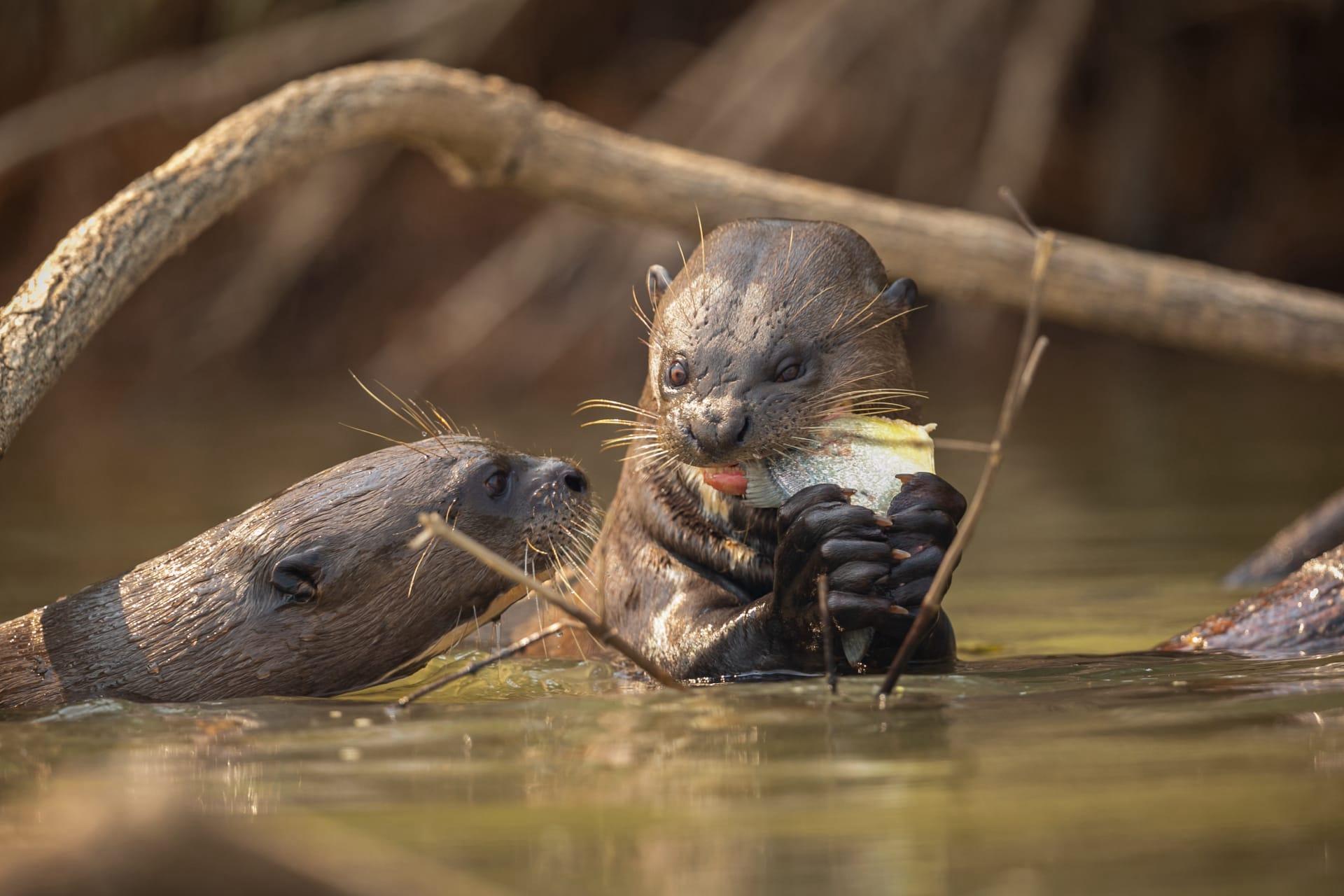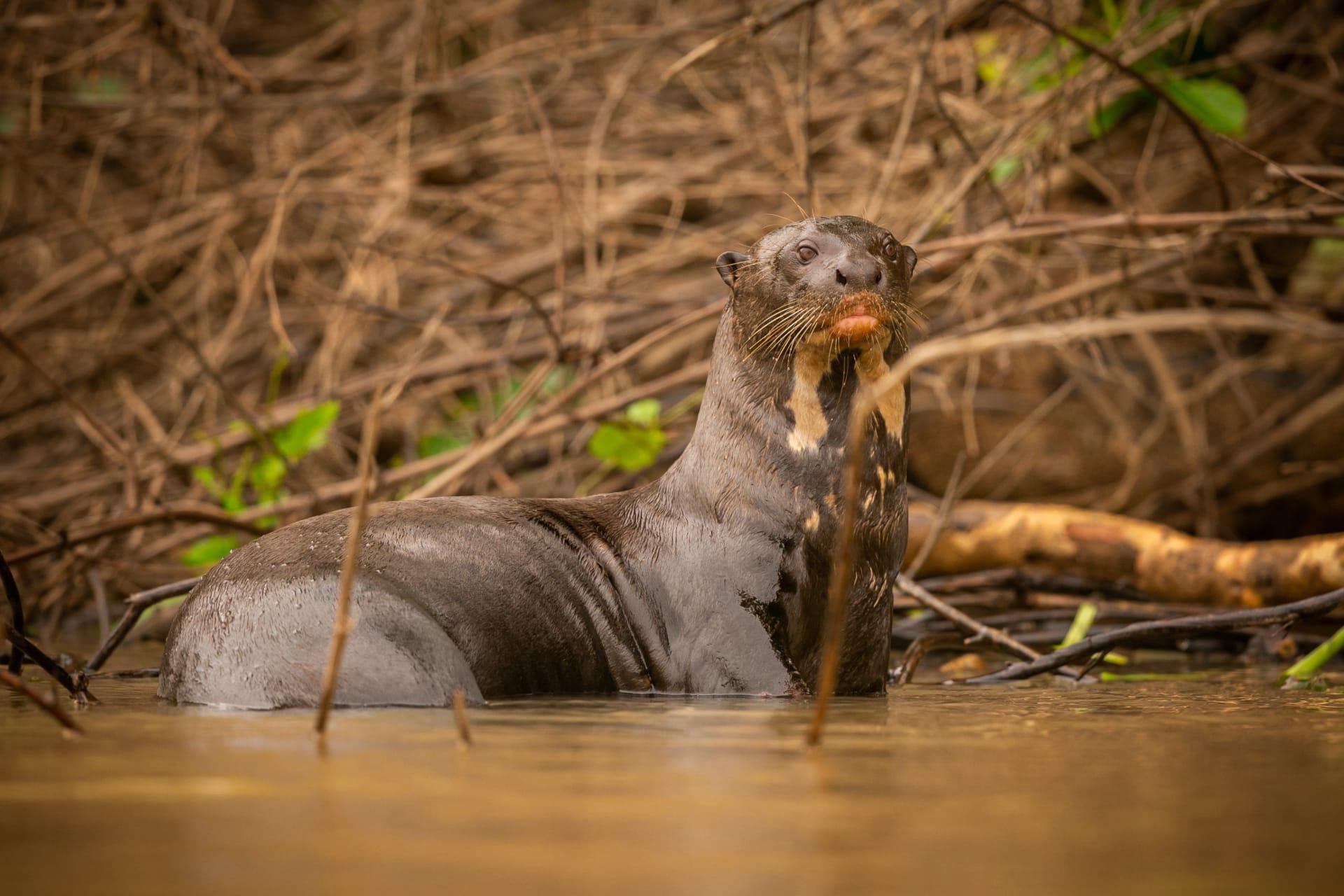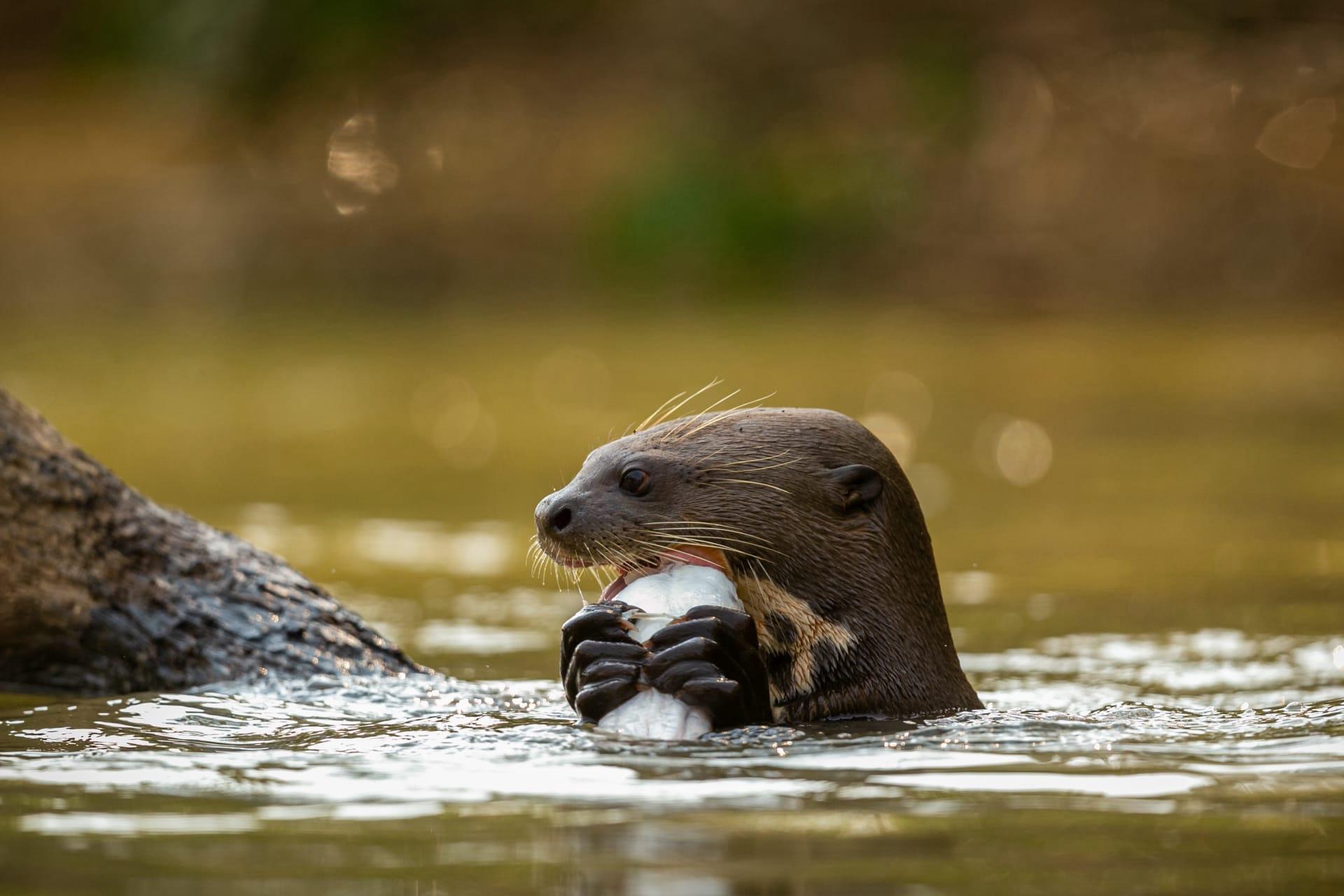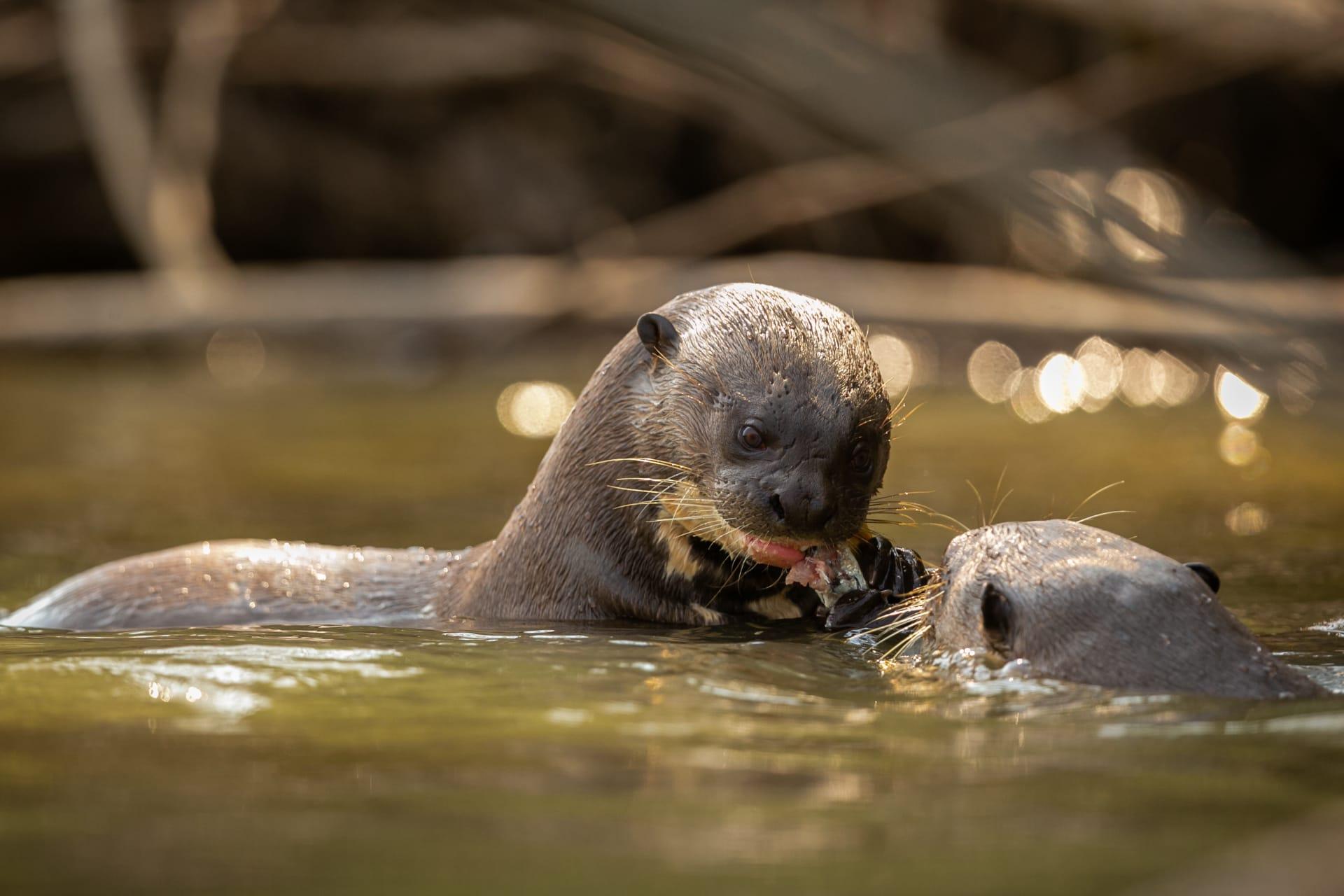1
Otters are remarkable for their ability to use tools, a rare trait in the animal kingdom. Sea otters, for instance, use rocks to crack open hard-shelled prey like clams and sea urchins. They've even been observed storing their favorite rocks in underarm pouches, a unique adaptation among otters. This tool use is not just a random behavior; it's a learned skill passed down through generations, showcasing their problem-solving abilities.
Another intriguing fact about otters is their social structure, particularly in the giant otter species found in South America. These otters are highly social and live in groups that can number up to 20 individuals. They communicate with an array of vocalizations - over 22 different sounds have been documented, used for everything from social bonding to alarm calls. This complex social structure and communication system are essential for their survival and hunting strategies in the wild.

2
Otters have an impressive ability to regulate their body temperature in various environments, thanks to their dense fur - among the densest in the animal kingdom. An otter's fur contains about 600,000 to 1,000,000 hair follicles per square inch. This dense fur provides a waterproof barrier and insulation, keeping them warm in cold waters. Remarkably, they don't have a layer of blubber like many marine mammals; instead, they rely entirely on this fur for warmth.
The playfulness of otters is not just adorable but also serves a crucial role in their development and survival. Young otters spend a significant amount of time playing, which helps them learn essential skills like hunting and escaping from predators. For example, river otters often practice mock fighting or chase each other, honing their agility and speed. This playful behavior continues into adulthood, maintaining their physical fitness and social bonds.

3
Otters have a unique hunting technique that sets them apart from other predators. They are known to create a "feeding raft" by floating on their backs and using their stomachs as a table. This behavior is especially common in sea otters, who often crack open shellfish and eat while floating. This method not only provides efficiency in handling their food but also allows them to stay vigilant for predators while eating.
The diet of otters varies widely among species and habitats. For instance, the Eurasian otter primarily feeds on fish but can also hunt amphibians, crustaceans, and even small birds. This adaptability in diet is key to their survival in diverse environments, ranging from coastal areas to freshwater rivers. Their strong teeth and powerful jaws enable them to tackle a variety of prey, reflecting their opportunistic and versatile hunting style.

4
One of the most remarkable aspects of otter behavior is their use of "latrine sites." Otters use specific areas to defecate and urinate, which serve as social hotspots. These sites are a means of communication through scent marking, allowing otters to convey information about their identity, reproductive status, and territorial boundaries. This behavior is crucial for their social dynamics, especially during mating seasons.
Otters have a significant impact on their ecosystem, often being described as a "keystone species." This means their presence and activities have a disproportionately large effect on their environmental conditions. For example, sea otters help maintain kelp forest ecosystems by preying on sea urchins that would otherwise overgraze the kelp. This role highlights the importance of otter conservation, as their decline can lead to the disruption of entire ecosystems.

5
Otters display a unique bonding behavior known as "rafting." This is most commonly seen in sea otters, where groups, often same-sex, join together, floating in interconnected groups while they sleep. These rafts can include a few to hundreds of otters, linked by holding hands (or 'paws') to prevent drifting apart. This social behavior provides safety in numbers and helps in maintaining body warmth.
The swimming abilities of otters are extraordinary, with some species showing remarkable adaptations. For example, the North American river otter can close its nostrils and ears to prevent water entry while diving. They can also hold their breath underwater for up to 8 minutes, diving to depths of 60 feet or more. This adaptation is crucial for their hunting and foraging strategies, allowing them to explore and exploit a range of aquatic environments.